Tuesday Triage #90
- TUESDAY TRIAGE #90 by Vadim Drobinin
- On getting back
- Things I enjoyed reading
- 1. A History of Hup, the Jump Sound of Shooting Games by @bryanmenegus
- 2. Your Camera Roll Contains a Masterpiece by Michael Johnston
- 3. Why Have Female Animals Evolved Such Wild Genitals? by @rachelegross
- 4. Exit Interviews Are a Trap by @jacobian
- 5. 25+ Years of Personal Knowledge Management. From scattered ideas to networked thoughts by @dsebastien
- 6. My free-software photography workflow by @ampajaro
- 7. A Hobby Gotten Out of Hand by @ChrisGSeaton
- 8. Digging Up the Rich Viking History of Britain by Joshua Levine
- 9. Mapping where the earth will become uninhabitable by Von Ida Flik, André Pätzold and Benja Zehr
- 10. Dim Sum–Style Steamed Pork Ribs With Fermented Black Beans Recipe by J. Kenji López-Alt
- Things I didn't know last Tuesday
- 1. Pressed duck
- 2. Mexico used computer models to find a place for Cancun
- 3. Wigs helped turn South Korea into an economic powerhouse
- 4. Do chefs or restaurants get Michelin stars?
- 5. Who invented the jigsaw puzzle?
- 6. Smartphone-based colorimetric determination
- 7. Basque–Icelandic pidgin
- 8. Albums without a title
- 9. Retirees Who Live on Cruise Ships
- 10. Tom Cruise saved 'Lock, Stock and Two Smoking Barrels'
- Book of the week
- Thank you and see you in a week!
TUESDAY TRIAGE #90
by Vadim Drobinin ¶
Your weekly crème de la crème of the Internet is here!
05.04.2022 (read in browser)
-
Intro
Whatever is on my mind this week. -
Things I enjoyed reading
Ten-ish articles I found worth reading. -
Things I didn't know last Tuesday
Ten-ish facts I didn't know when I wrote the previous edition. -
Book of the week
Some thoughts on the latest book I've read.
On getting back ¶
A few quick (or not so) culinary adventures this week.
The most surprising was fregula, a semolina-based pasta from Sardinia, cooked akin risotto:
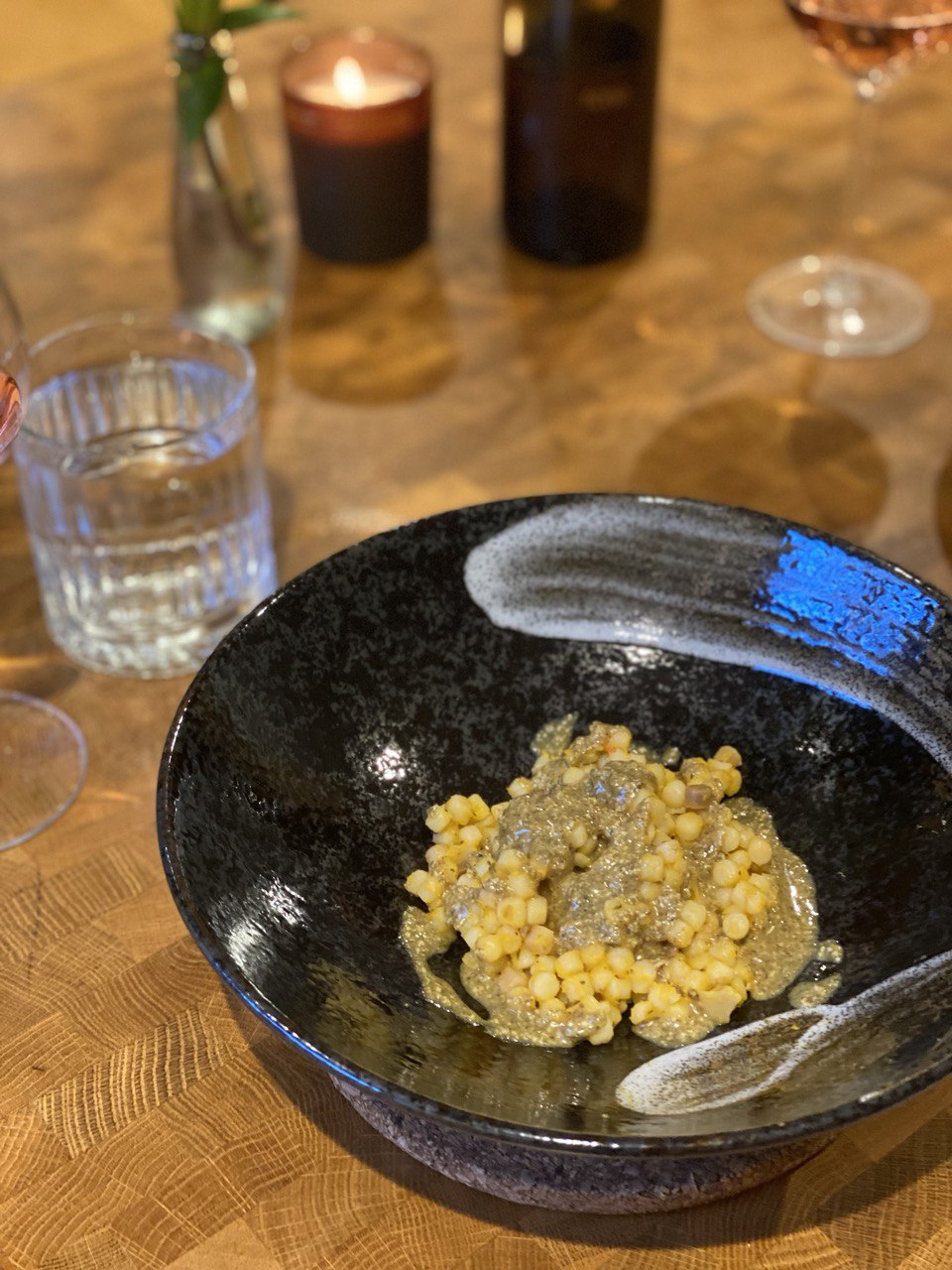
We also stopped by a coffee festival, and while I still feel like those dozens of shots of espresso are still affecting my cognitive abilities, this small taster from Ozone roastery was a great example of potential zero waste. They used coffee chaff to infuse milk for ice cream, and then filled a tasteless seaweed bubble with some cold brew.
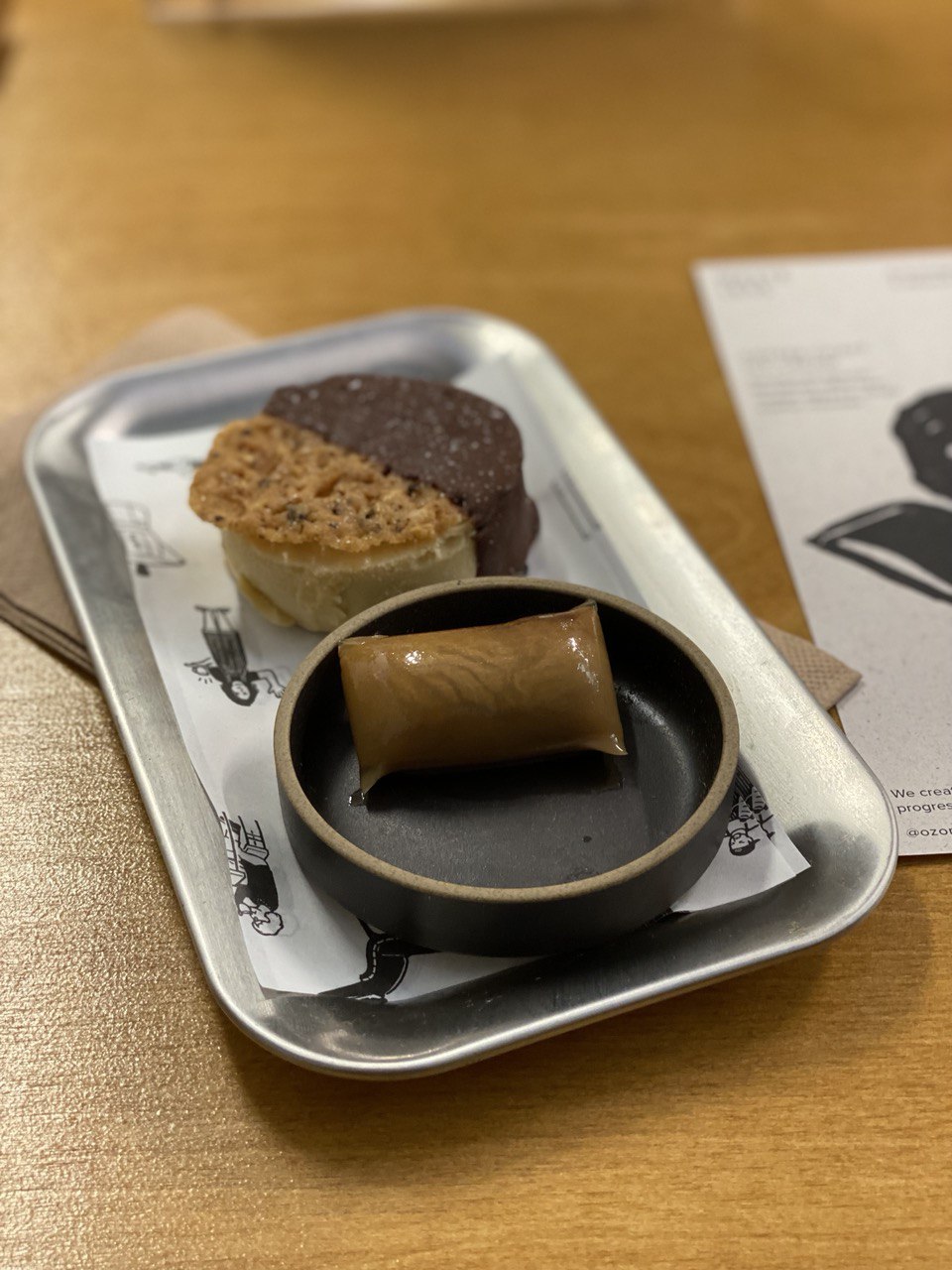
Also I finally got time to cook a bit more, starting with clams and Guinness foam (I did something similar last year, but with mussels):

Then proceeding with pollock poached in red wine reduction (and also some corn on the cobs in home-cultured Marmite butter in the background):
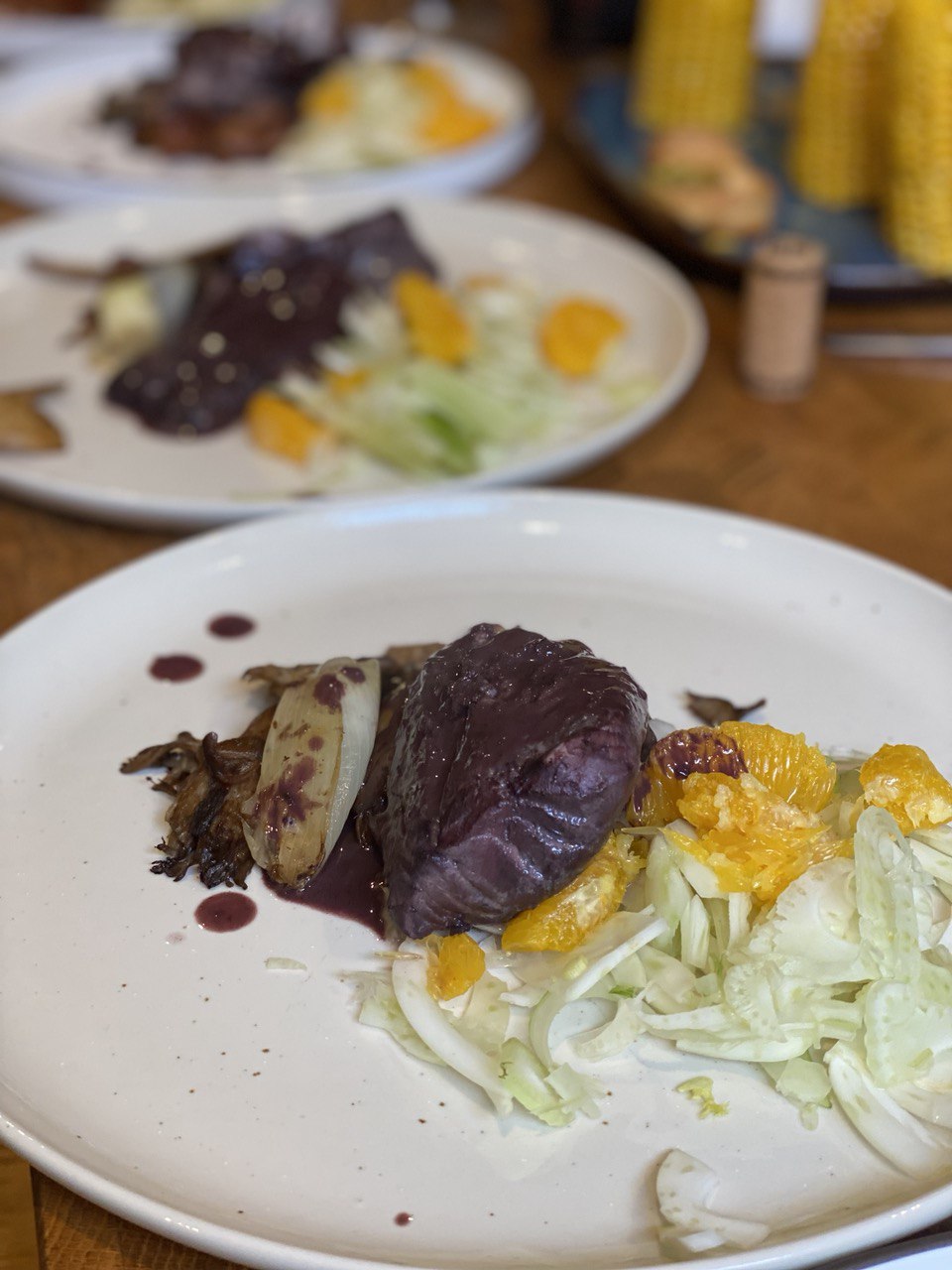
But the most exciting was this attempt at replicating Cedric Grolet's Paris-Brest flower.
Homemade praline:

The thinnest pastry dough I've ever made:

Numerous fillings and mousses:
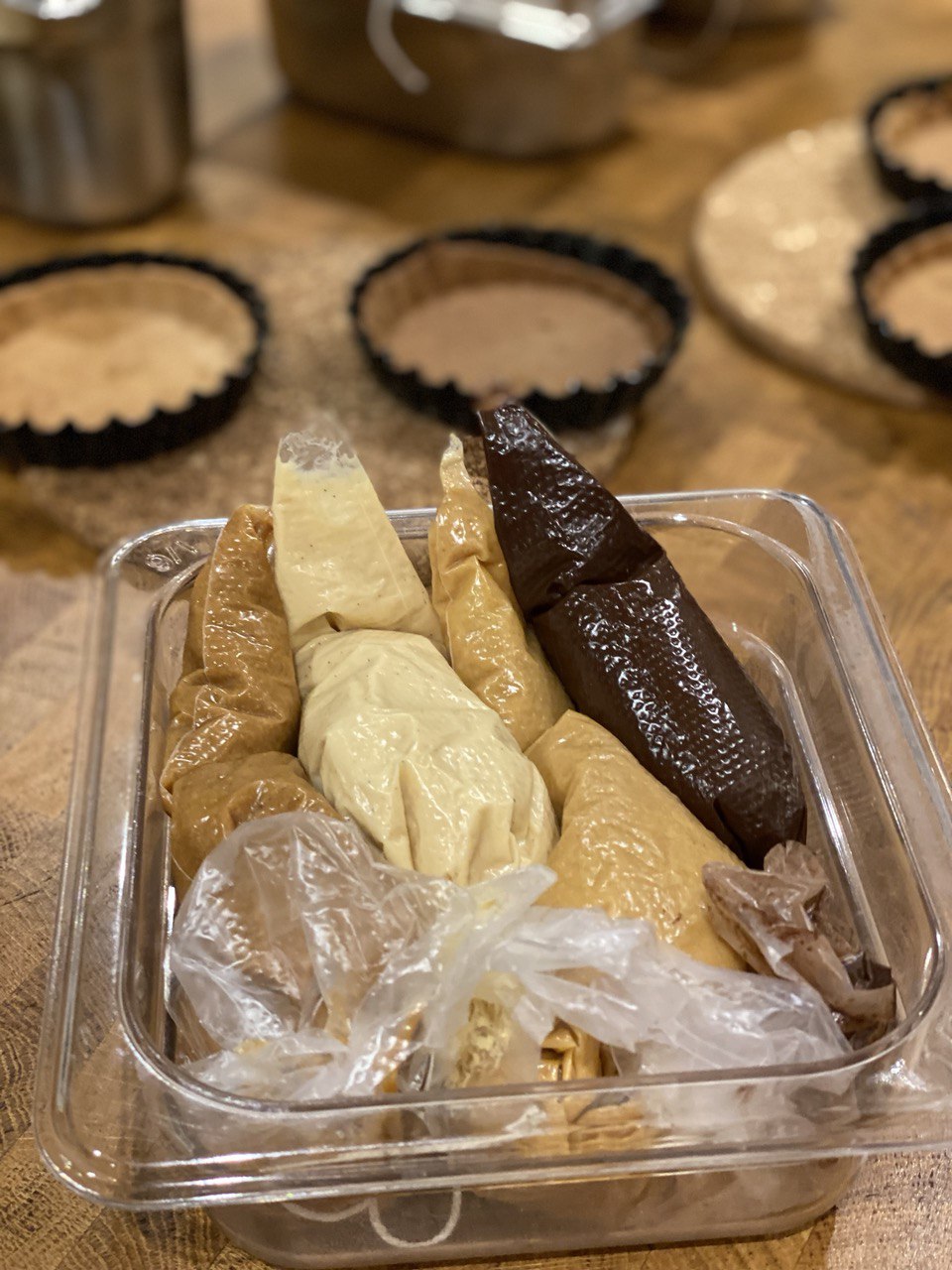
There is still room for improvement when it comes to plating though:
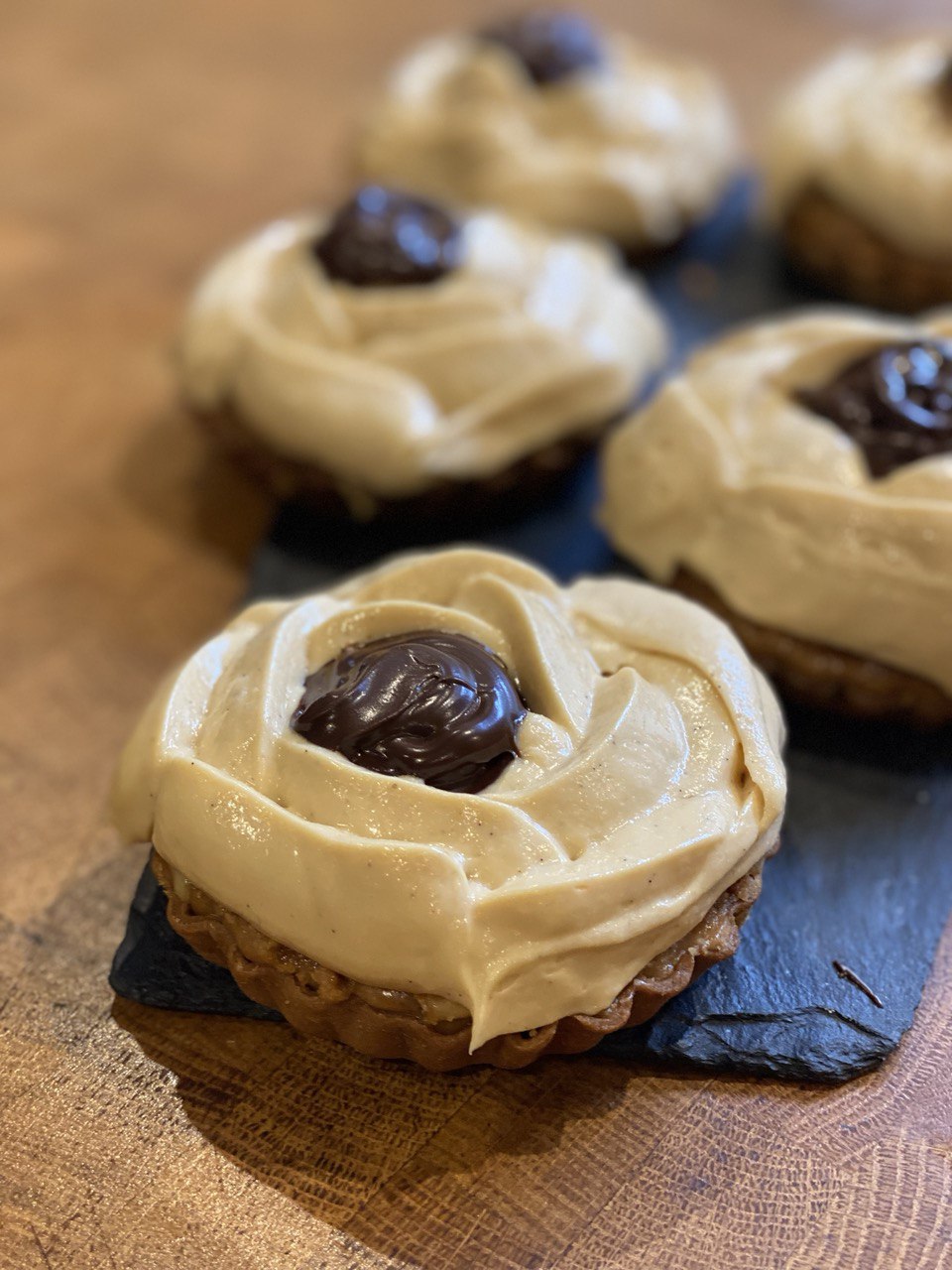
Filled with choux and more creams:
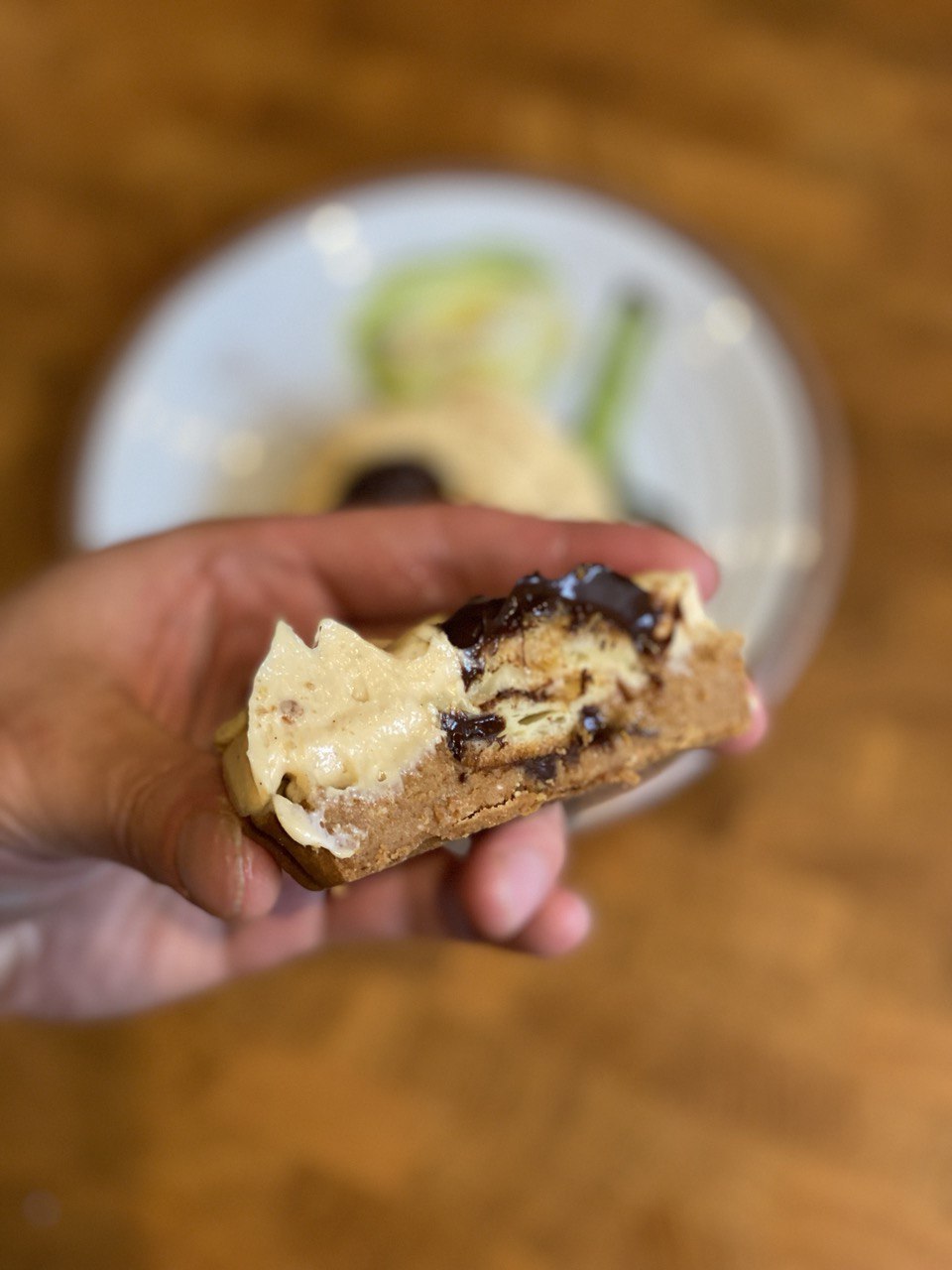
Turned out really well.
Things I enjoyed reading ¶
1. A History of Hup, the Jump Sound of Shooting Games by @bryanmenegus ¶
Those who played computer games probably could instantly imagine the jump sound in their heads, and this is a great story about how it came to life:
John Romero would eventually be credited for coining “deathmatch.” And he and his cofounders at Id Software are rightly canonized as instrumental in the formation of the modern FPS. But through an Alcornian combination of intuition and circumstance, Id is also the likely culprit behind a once-ubiquitous but largely invisible sonic sensibility of the genre: the hup.
As someone who pretty much exclusively plays Quake 3 for nearly two decades, I am slightly surprised that modern game developers didn't come up with a better sound though. I mean, it's been a while.
2. Your Camera Roll Contains a Masterpiece by Michael Johnston ¶
Last time I ranted about the value of making photos while traveling, and that segued nicely into today's essay on possible masterpieces among thousands of photos we store on our phones and in clouds:
Many of us are now like those National Geographic photographers. Almost without trying, we can find ourselves with twenty-three thousand pictures on our camera rolls. Unfortunately, we don’t have picture editors to do the work of sifting and culling and considering. No one helps us discover which shots “have legs” and stay interesting the more we look at them; no one shows us which photographs say what we mean to say; and no one tells us how to identify the best and leave aside the rest. Many of us have also stopped printing our photos. It used to be that we were constrained by our physical photo albums, that we had to choose which pictures to keep and which to leave out.
One day I will find enough motivation to clean my photos library from duplicates and organise into folders, but that will be a different story.
3. Why Have Female Animals Evolved Such Wild Genitals? by @rachelegross ¶
I never thought I'd read about animal genitalia with so much genuine curiousity but here I am, so kudos to the author:
The first step was to find some female ducks. Brennan and her husband drove out to one of the surrounding farms and purchased two Pekin ducks, which she euthanized without ceremony on a bale of hay. (Brennan’s husband is used to these kind of excursions: “He brings me roadkill as a nuptial gift,” she says.) Instead of slicing the reproductive tract up the sides, she spent hours carefully peeling away the tissues, layer by layer, “like unwrapping a present.” Eventually, a complex shape emerged: twisted and mazelike, with blind alleys and hidden compartments.
Bear in mind that while article is illustrated it's probably still safe for work.
4. Exit Interviews Are a Trap by @jacobian ¶
An interesting take on Exit interviews. I've been to a few in the past, and can confirm that I've never seen the company changing for the better following your feedback. Usually it just burns a certain number of bridges, and as the result doesn't really help much neither you nor the people you leave behind.
This is why I say exit interviews are a trap. There’s no upside, and a lot of downside. The best case scenario (positive change) is highly unlikely, and even if it happens, of no direct value to you. And the worst case scenario is retaliation that could haunt you for years. If we could calculate an “expected average outcome”, like an expected value of a bet, it’d be deeply negative. Nobody who knows the odds would take this bet.
That being said, there is still a chance that people would take your feedback seriously - and it probably works the best in small to medium-sized startups.
5. 25+ Years of Personal Knowledge Management. From scattered ideas to networked thoughts by @dsebastien ¶
A very detailed explanation of one's way to maintain a knowledge database, from budgeting to photos to records.
For many years I also used a mind map to keep track of my long-term goals in life. In it I explored what I wanted to learn, what I wanted to achieve, places I wanted to visit, etc. I followed David Allen's advice and used different branches of the map to explore different aspects of my life at different time horizons (e.g., this year, within 3 years, within 5, within 10). I still use that mind map but now combine it with other tools and techniques to define and review my personal plans.
That's probably one of those things where getting into the flow is the hardest part, but the benefits eventually cover up for it.
6. My free-software photography workflow by @ampajaro ¶
Continuing with my thoughts on photography driven my mobile phones, a selection of tools to optimise the workflow:
The other thing I need is the ability to zoom in to 100% of a photo, then quickly move to the next or previous photo to compare them and, most importantly, that the view stays in the same position, i.e. that it doesn't reset to the top-left corner of the image or something like that, like some image viewers do.
Sounds already way better than Apple Photos, so why not give it a try?
7. A Hobby Gotten Out of Hand by @ChrisGSeaton ¶
Growing up in a country where army is a mandatory endeavour with high chances to come back home lacking in limbs or nerves, I was quite surprised to see how it looks here in the UK, at least for volunteers:
First of all, nobody ever shouts ‘sir yes sir’. For the most part people just talk like normal humans. I do keep a distance between myself and the soldiers because I’m there to provide leadership, not be their friend. The soldiers do call me ‘sir’ or ‘Squadron Leader’ (just once in a sentence is plenty) and salute me, but the officers are all on simple first-name terms apart from my boss, who I call ‘Colonel’.
The story behind it is also really interesting, so worth reading the whole post.
8. Digging Up the Rich Viking History of Britain by Joshua Levine ¶
I heard about vikings in the UK a few times (mostly thanks to various series), but this is probably the first detailed attempt to find their traces that I encounter:
In general, apart from stone sculptures and place names, the Vikings have left us little record of their 250-year moment on the stage of English history, roughly from the end of the 8th century to the middle of the 11th. Scholars are left to pick over some old bones, sometimes burnt and sometimes not, and the useful objects that accompanied their owners into the hereafter—what archaeologists call “grave goods.”
Seems like for some reasons it's harder than finding proofs of Roman's presence, despite them being on the island way before.
9. Mapping where the earth will become uninhabitable by Von Ida Flik, André Pätzold and Benja Zehr ¶
A great interactive post on possible changes to the planet's layout. We talk a lot about climate change, but seeing how it might change the Earth visually is even more powerful:
Lakes are drying up, droughts are threatening global food security and drinking water supplies are lacking in many places. Climate change is leading to a paradox: more forms of water or precipitation are falling from our skies, while this same liquid source of life is becoming scarce. Increasing weather extremes are to blame for this conundrum. Droughts are followed by heavy rain and flooding. Dried-out lands can’t soak up the masses of water, so it runs off or evaporates.
Probably better to check it out from a computer.
10. Dim Sum–Style Steamed Pork Ribs With Fermented Black Beans Recipe by J. Kenji López-Alt ¶
My interest in the science behind cooking bootstrapped from Serious Eats article with their wild experiments. They lacked in that type of writing since Kenji left the team, but since he got an occasional comeback as a consultant, this is probably the first "old-school style" post with attempts to find the right way to make steamed pork ribs:
I wasn’t willing to use our home washer (I suspect my daughter’s teachers would have some questions as to why she always smells like raw pork). Instead, I tried agitating meat in a salad spinner (not particularly effective at washing, as salad spinners are good centrifuges but don’t offer much by way of turbulence—they do, however, make it easy to dry meat after washing, if you don’t mind getting raw meat in your salad spinner), as well as in a stand mixer full of water with the paddle and dough hook attachments. Of those two, the dough hook worked better (the paddle tended to mangle the meat more than simply wash it), but neither was much more effective than some thorough hand-washing.
I wish they had more articles like this coming.
Things I didn't know last Tuesday ¶
1. Pressed duck ¶
I've been researching restaurants in London and came across one, claiming to be the only place in the UK serving this dish:
First, a duck (preferably young and plump) is asphyxiated to retain the blood. The duck is then partially roasted. Its liver is ground and seasoned, then the legs and breast are removed.
The remaining carcass (including other meat, bones, and skin) is then put in a specially-designed press, similar to a wine press. Pressure is then applied to extract duck blood and other juices from the carcass. The extract is thickened and flavoured with the duck's liver, butter, and cognac, and then combined with the breast to finish cooking.
Given that my wife was a bit sceptical about paying them a visit and watching the bird being pressed in front of our table, I might just show up with a few takeaway containers and bring it home sans the theatrical experience.
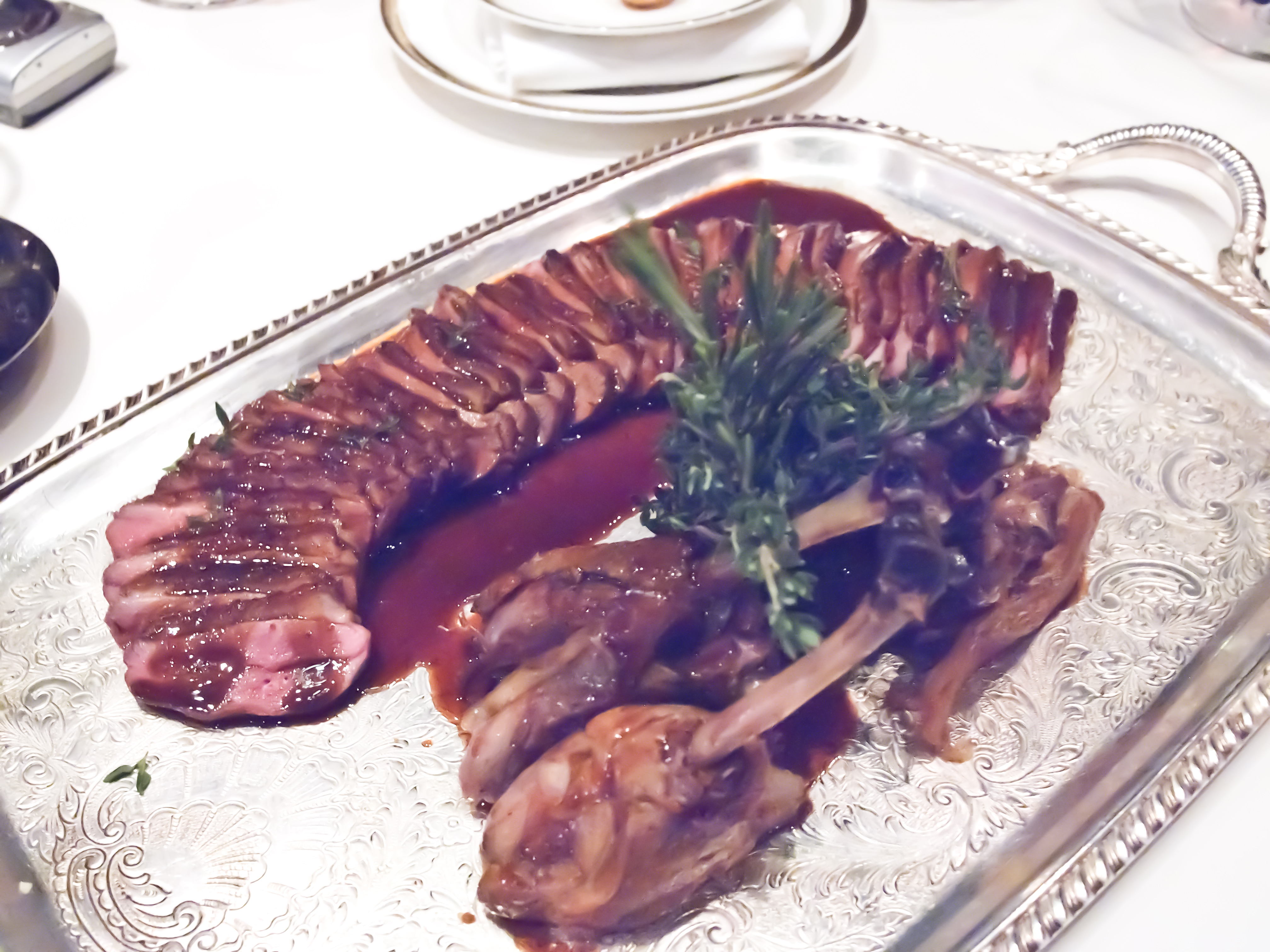
2. Mexico used computer models to find a place for Cancun ¶
Apparently they tried to find a place most appealing to tourists, and then built a resort there:
In 1968, Mexico used computer models and availed itself of all the best brains and technical know‐how of a modern nation in selecting the site, a nine‐mile strip of jungle island off the coast of Quintana Roo.
I am not really sure of the quality of the computer models in 1968 though. I guess they were fine, as space industry probably used the same computers rather successfully.

3. Wigs helped turn South Korea into an economic powerhouse ¶
That's an unusual object of export and also seems like a cause of many childhood traumas:
In 1964, wig sales totaled a measly $14,000. By 1970, wigs brought South Korea over $93 million in annual revenue. At its height, wigs made up 9.3% of South Korea’s exports and was the country’s number two export.
At the same time, this is a by-the-book example of how a single idea could change the economy of the whole country.
4. Do chefs or restaurants get Michelin stars? ¶
I always knew that chefs can't keep their Michelin stars if they change a restaurant. At the same time I was sure the stars are awarded to chefs, so if they leave, restaurants don't keep them.
That's not true:
Stars cannot be awarded to individuals and only to restaurants "based on the quality of the food they serve", according to the guide. That means that even chefs like Alain Ducasse, the chef with the most Michelin-starred restaurants in the world, is not actually a 'Michelin-starred chef' because the term doesn’t technically exist under the Michelin guidelines.
At the same time, judging by the history, most restaurants loose their stars almost instantly when the chef leaves, unless they manage to hire someone as good in the meantime.
5. Who invented the jigsaw puzzle? ¶
Seems like the answer is a puzzle on its own.
An unequivocal answer to: "Who invented the jigsaw puzzle?", does not yet exist but Madame de Beaumont and John Spilsbury are two very strong contenders. While other possible origins do not appear as likely, some of them can not yet be dismissed. Tom Tyler says, " the inventor of the jigsaw puzzle was the first person to rip up a letter, toss it in a wastebasket, and then reassemble it after realizing it needed to be kept".
I really enjoyed reading through the possible hypothesis though.
6. Smartphone-based colorimetric determination ¶
A paper claims that it's possible to determine drugs in drinks with a smartphone:
In this present investigation, we have shown the possibility of using this approach to both quantify GBL and GHB using both UV/Vis spectrometry and by the application of the camera of a smartphone to record images of the purple color developed.
If it really works, the next step could be to use phones to assess the amount of calories in cocktails and their ABV content (although it'd probably require some more complicated setup).
7. Basque–Icelandic pidgin ¶
Probably the main takeaway from it is that Basque were a widespread seafaring nation way before the British and the Portuguese, but that is also pretty cool, given that Basque doesn't have a connection with other European languages:
Basque whale hunters who sailed to the Icelandic Westfjords used the pidgin as a means of rudimentary communication with locals.
Now I have to at least look up their basic grammar.
8. Albums without a title ¶
I didn't know that so many albums don't have titles (and "Untitled" is a different, valid title in that sense):
Many musical works have been created or released without a title.
That being said, there are also lots of edge cases to handle if you deal with music in your app – and a lack of a title is probably the least of your problems.
9. Retirees Who Live on Cruise Ships ¶
I didn't know that retiring to a cruise ship is an option, but I also didn't know that there are cruise ships that sail for the majority of the year:
It turns out Farschman is just one of dozens of retired (and retirement-age) people spending a bulk of their time living at sea. There are plenty of ways to make it happen, from combining stand-alone itineraries to purchasing a unit on a residential cruise ship.
That must feel like a Groundhog day though.
10. Tom Cruise saved 'Lock, Stock and Two Smoking Barrels' ¶
That's one of my favourite movies (or at least used to be - it's been a while since I watched it last time), and I didn't know that if it weren't for Tom Cruise attending the screening, it'd probably never make it to the cinema.
“At the end, Tom got up in front of everyone and said ‘this is the best movie I’ve seen in years, you guys would be fools not to buy it'”
So essentially he is responsible for launching careers of Jason Statham, Guy Ritchie, and Matthew Vaughn.
Book of the week ¶
If you've heard about the nose-to-tail eating, you most likely have heard about Fergus Henderson, who coined both the term and the approach years back. His restaurant in London is a must-visit destination for pretty much anyone coming to the city, and yet I always felt that given its age there is not much left from the old fame.
However reading through Fergus Henderson and Trevor Gulliver's The Book of St John definitely makes me rethink that, so probably I will have to pay them a visit in the upcoming weeks:
Fergus has often said, ‘The bread is as important at the table as your knife and fork.’ It is a peculiar thing, in a restaurant, to give people bread at the very moment that they are about to be showered with abundance. But it is vital: it speaks of generosity and of ritual, the two most imperative principles of the dining room.
Loaves express lunch. On the kitchen counter a proud loaf is a pillar of strength pronouncing the power to mop up juices, to contain a bounty of cold cuts between two fine slices, to provide ballast and structure. On the restaurant table, next to your carefully laid napkin, salt and pepper, a pile of bread and butter heralds the impending meal, gently soothing your awareness away from the day’s vicissitudes and focusing the mind on what is to come. At the moment you reach for the bread the process of lunch has begun.
Even though I am not a huge fan of bread (as in I can't eat a lot of it in one go), I do love the bread and butter serving pretty much anywhere. A tasting menu in a fine dining place is not a tasting menu, if it doesn't include those two in some form or another.
Making sure that it's present is indeed as important as providing one with a fork.
Thank you and see you in a week! ¶
If you have any questions, or want to suggest a link for the next newsletter, please drop me a message on Twitter or reply to this email.
Cheers! 🍸